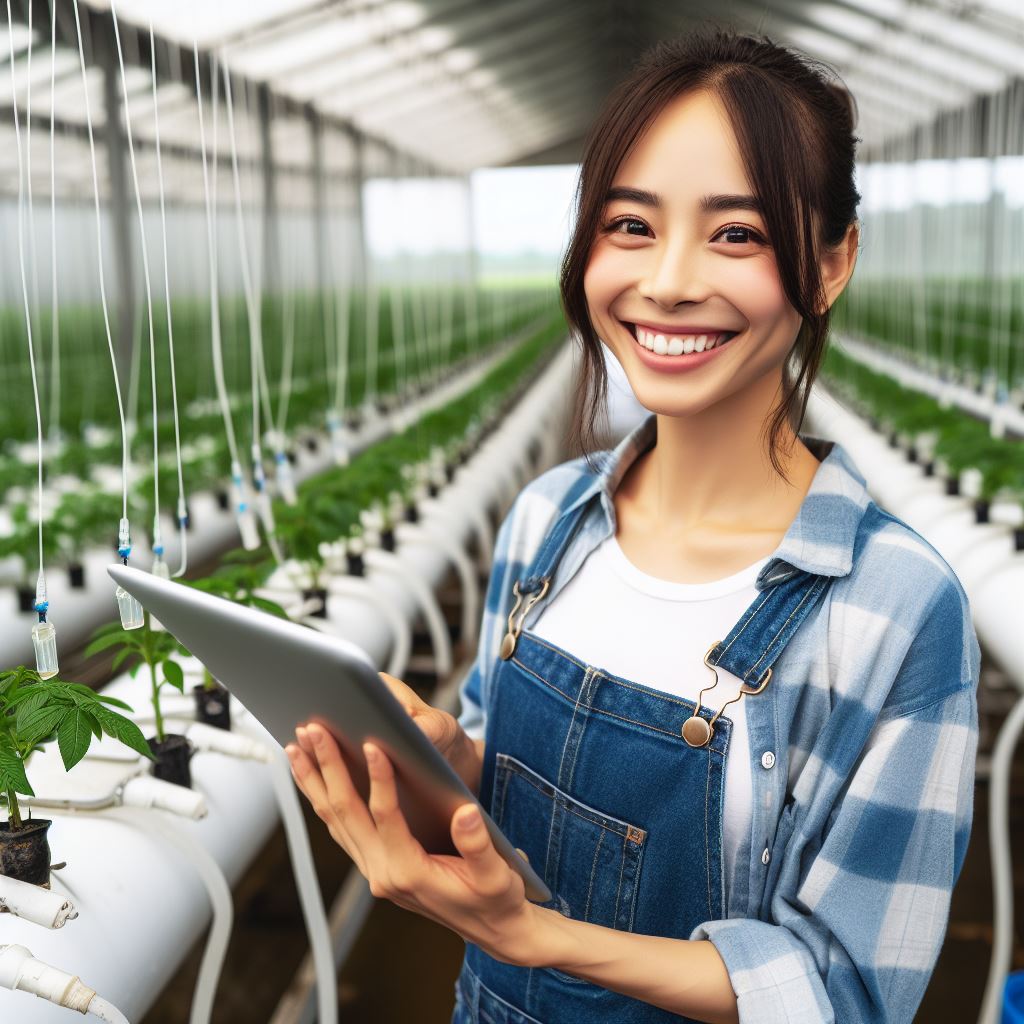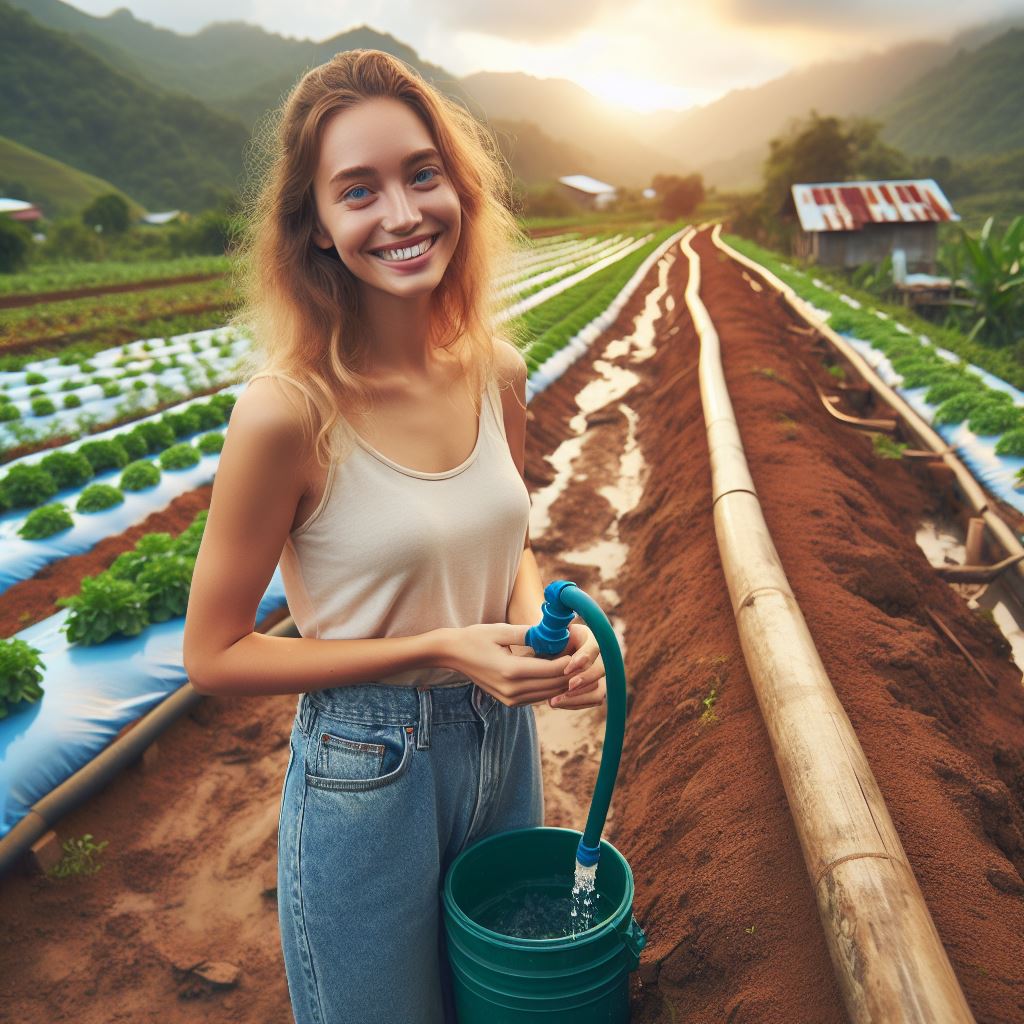Introduction
Water, a vital resource, is significantly affected by climate change, necessitating climate change strategies for water preservation.
As our planet warms, the availability and quality of water are facing significant challenges.
In this blog section, we will discuss the importance of water preservation in the context of climate change and highlight strategies to combat this issue.
Importance of water preservation in the context of climate change
Water preservation is of utmost importance in the face of climate change.
Rising temperatures lead to increased evaporation rates, causing water scarcity in many regions.
With more frequent and intense droughts, it becomes crucial to conserve water to ensure its availability for future generations.
Additionally, climate change affects precipitation patterns, resulting in uneven distribution and extreme weather events, further exacerbating water scarcity and flood risks.
Preserving water resources will enhance resilience and help mitigate the impacts of climate change.
Brief explanation of the purpose of the blog post
The purpose of this blog post is to raise awareness about the close connection between climate change and water preservation.
We aim to provide readers with an understanding of the importance of safeguarding water resources in the face of a changing climate.
By offering strategies for water preservation, we hope to empower individuals and communities to take action and contribute to a more sustainable future.
Basically, water preservation is crucial in the context of climate change.
Through this blog post, we hope to inspire readers to recognize the significance of conserving water resources and adopt strategies that will make a positive difference in combating the impacts of climate change.
Stay tuned for our upcoming sections where we delve deeper into effective water preservation strategies.
Understanding the Impact of Climate Change on Water Availability
Concept of climate change and its effects on water resource
Climate change is a pressing issue that is having significant impacts on our planet.
One area where these effects are particularly noticeable is water availability.
As temperatures rise and weather patterns shift, the availability of water resources is being disrupted, posing challenges for communities around the world.
In this section, we will examine the impact of climate change on water availability and explore strategies for water preservation.
Climate change refers to long-term changes in the Earth’s climate system, primarily resulting from human activities such as the burning of fossil fuels and deforestation.
These activities release greenhouse gases into the atmosphere, trapping heat and causing the Earth’s temperature to rise.
As a result, the world is experiencing more frequent and intense heatwaves, altered precipitation patterns, and rising sea levels.
How rising temperatures can lead to increased evaporation rates
One of the major effects of climate change on water availability is increased evaporation rates.
As temperatures rise, more water evaporates from lakes, rivers, and even soil.
This leads to decreased surface water availability, which is essential for human consumption and agricultural use.
Additionally, higher evaporation rates contribute to drying out soils, exacerbating the risk of droughts.
Link between climate change and extreme weather events such as droughts and floods
Climate change also intensifies extreme weather events, such as droughts and floods.
Droughts, in particular, pose a significant risk to water availability. Increased temperatures and altered precipitation patterns can lead to longer and more severe droughts, affecting both surface water and groundwater sources.
These prolonged dry periods can have severe social, economic, and environmental consequences.
On the other hand, climate change also increases the likelihood of intense rainfall events, leading to floods.
While floods can provide a temporary boost to water supplies, they often overwhelm infrastructure and contaminate water sources, creating health hazards.
Moreover, the sudden discharge of large volumes of water can erode soils and damage ecosystems, further impacting long-term water availability.
To mitigate the impact of climate change on water availability, there are several strategies for water preservation that can be implemented.
One key approach is promoting water conservation and efficiency measures.
This includes technologies and practices that reduce water use in households, agriculture, and industry.
For example, using water-efficient appliances, implementing drip irrigation systems, and reusing treated wastewater can significantly reduce water demand.
Additionally, managing and preserving natural water sources are crucial.
Protecting wetlands, forests, and other ecosystems helps maintain healthy water cycles and prevents water loss through evaporation.
These ecosystems act as natural storage and filtration systems, enhancing water quality and availability.
Furthermore, improving water infrastructure is essential for adapting to changing climate conditions.
Upgrading water storage and distribution systems can help capture and store water during periods of excess and distribute it during dry periods.
Implementing smart water management techniques, such as real-time monitoring and data analysis, can optimize water usage and minimize losses.
Collaboration and cooperation are also vital in addressing climate change impacts on water availability.
International agreements and regional partnerships can facilitate the sharing of knowledge, resources, and technologies to alleviate water scarcity issues.
Communities, governments, and policymakers must work together to develop comprehensive water management plans that consider both short-term and long-term climate change projections.
In fact, climate change is directly impacting water availability, posing significant challenges for societies worldwide.
Rising temperatures and extreme weather events are disrupting water resources, leading to increased evaporation rates, droughts, and floods.
However, by implementing strategies for water preservation, such as water conservation, ecosystem protection, infrastructure improvement, and international collaboration, we can adapt to these changing conditions and secure water supplies for future generations.
It is crucial for us to act now and prioritize sustainable water management practices to mitigate the impacts of climate change on water availability.
Read: Smart Irrigation in Dry Farming
Transform Your Agribusiness
Unlock your farm's potential with expert advice tailored to your needs. Get actionable steps that drive real results.
Get StartedStrategies for Water Preservation in Agriculture
Water conservation plays a vital role in farming practices as it ensures the sustainable use of this priceless resource.
Significance of Water Conservation in Farming Practices
- Implementing efficient water conservation techniques is crucial to address water scarcity in agriculture.
- Reducing water consumption in farming practices helps preserve natural water sources for other essential activities.
- Water conservation in agriculture is essential to maintain the ecological balance and prevent water-related crises.
- Adopting water-saving strategies in farming practices is key to achieving long-term sustainability in agriculture.
- Promoting water conservation in agriculture can help minimize the impact of climate change on food production.
Promote the Use of Efficient Irrigation Techniques such as Drip Irrigation
- Drip irrigation systems deliver water directly to the plant roots, minimizing evaporation and water loss.
- This efficient irrigation technique ensures that plants receive an adequate water supply while minimizing waste.
- Drip irrigation reduces water usage by up to 50% compared to traditional irrigation methods.
- The precise application of water through drip irrigation prevents water runoff and erosion, preserving soil quality.
- Farmers can optimize water distribution by using drip irrigation systems customized to specific crop needs.
Benefits of Precision Farming in Minimizing Water Waste
- Precision farming uses advanced technologies to monitor soil moisture, enabling precise irrigation scheduling.
- By analyzing real-time data, precision farming helps farmers avoid over- or under-watering their crops.
- This targeted approach minimizes water waste and reduces the energy required for irrigation.
- Precision farming techniques help optimize water usage, leading to increased crop productivity and profitability.
- By applying precision farming practices, farmers can conserve water resources without compromising crop quality and yield.
Utilization of Alternative Water Sources like Rainwater Harvesting and Greywater Recycling in Agriculture
- Rainwater harvesting involves collecting and storing rainwater for later use in agricultural activities.
- This sustainable practice reduces dependence on freshwater sources and supplements irrigation needs.
- Greywater recycling refers to treating and reusing wastewater from households and industries for irrigation purposes.
- Utilizing alternative water sources like rainwater and greywater can alleviate pressure on freshwater reserves.
- Implementing these practices in agriculture reduces the ecological impact of water extraction from natural sources.
In short, adopting strategies for water preservation in agriculture is crucial for a sustainable future.
Emphasizing the significance of water conservation, promoting efficient irrigation techniques like drip irrigation, utilizing precision farming, and exploring alternative water sources are essential steps towards preserving this precious resource for generations to come.
Read: Soil Conservation Techniques in Drought

Encouraging Sustainable Land Management Practices
One of the key strategies for water preservation is to encourage sustainable land management practices.
These practices play a crucial role in ensuring the availability and quality of water resources for future generations.
Discussing the importance of soil health in water preservation is essential when advocating sustainable land management practices.
Healthy soil acts as a natural sponge, retaining water and preventing runoff.
Implementing erosion control measures is vital in preventing water runoff.
Erosion results in the loss of fertile topsoil, which decreases water infiltration and increases the risk of flooding.
Promoting the use of cover crops and reduced tillage practices is another effective approach.
Cover crops protect the soil from erosion, reduce evaporation, and enhance water infiltration.
Highlighting the role of organic farming in water preservation is crucial.
Organic farming practices, such as composting and crop rotation, improve soil structure, increase water retention, and decrease water pollution.
Encouraging sustainable land management practices is essential for mitigating the effects of climate change and ensuring water availability in the long run.
Soil health plays a vital role in water preservation. Healthy soil absorbs and retains water, preventing it from running off into rivers and streams.
Soil acts as a natural filtration system, purifying the water that percolates through it.
Implementing erosion control measures, such as terracing and contour plowing, helps prevent water runoff.
These measures slow down the flow of water, allowing it to infiltrate into the soil gradually.
Cover crops, such as legumes and grasses, are highly effective in reducing water runoff and improving soil health.
These crops provide ground cover, prevent erosion, and increase the organic matter content of the soil.
Reduced tillage practices, such as no-till or minimum tillage, help preserve soil structure and reduce water runoff.
By minimizing soil disturbance, these practices promote water infiltration and prevent erosion.
Organic farming promotes water retention and reduces water pollution.
By avoiding the use of synthetic fertilizers and pesticides, organic farmers protect water sources from contamination and promote sustainable water management.
In essence, encouraging sustainable land management practices is crucial for water preservation.
By focusing on soil health, implementing erosion control measures, promoting cover crops and reduced tillage, and advocating for organic farming, we can ensure the availability of clean water for future generations.
Read: Drought-Resilient Crops: A Guide
See Related Content: Impact of Green Laws on US Agriculture Sector
Raising Awareness and Education
One of the key strategies for water preservation is to raise awareness and educate both farmers and the general public about the importance of implementing water preservation strategies.
Adequate knowledge and understanding of water conservation techniques are essential for farmers to adopt sustainable water use practices.
By providing farmers with education and training programs, they can learn about the latest strategies and technologies for efficient water management.
Public education is equally important in fostering a culture of water preservation.
Through public awareness campaigns, individuals can be informed about the consequences of water scarcity and the role they can play in conserving this precious resource.
Role of Government Policies and Incentives
Government policies and incentives play a crucial role in promoting sustainable water use practices among farmers and other water-consuming sectors.
By implementing regulations and providing financial incentives, governments can encourage farmers to adopt water-saving technologies, such as drip irrigation and precision agriculture.
These policies can also discourage wasteful water practices and promote sustainable farming methods.
In addition to regulations, governments can invest in research and development to find innovative solutions for water preservation.
By funding research projects and providing grants to farmers, policymakers can accelerate the adoption of water conservation strategies.
Sharing Success Stories and Best Practices
Sharing success stories and best practices in water preservation within the farming community is a powerful tool to inspire and motivate others to adopt similar strategies.
Showcase Your Farming Business
Publish your professional farming services profile on our blog for a one-time fee of $200 and reach a dedicated audience of farmers and agribusiness owners.
Publish Your ProfileThrough platforms like conferences, workshops, and online forums, farmers can exchange their experiences and learn from each other.
By highlighting success stories, the farming community can see the tangible benefits of implementing water preservation techniques and be encouraged to follow suit.
Moreover, documenting and disseminating best practices in water preservation can help bridge the knowledge gap between researchers and farmers.
It enables scientists and policymakers to understand the practical challenges faced by farmers and develop more effective strategies.
Advocating for Collaborations
Collaboration between farmers, researchers, and policymakers is essential to develop innovative water preservation solutions that are practical and sustainable.
Bringing together these stakeholders through partnerships and joint initiatives creates a platform for knowledge exchange, research collaboration, and collective decision-making.
For instance, researchers can work closely with farmers to develop customized water management plans that suit their specific needs.
Policymakers can then use these insights to design targeted policies that support sustainable water use in agriculture.
Collaborations can also facilitate the transfer of technology and expertise from research institutions to farmers, enabling them to adopt cutting-edge water preservation techniques.
In review, raising awareness and educating farmers and the general public, along with government policies, sharing success stories, and advocating for collaborations, are crucial strategies for water preservation.
By implementing these measures, we can work towards a sustainable future where water resources are preserved for generations to come.
Read: Tech Innovations in Drought Farming
Explore Further: Vertical Farming: A Climate Solution
Conclusion
This blog post highlighted the significance of water preservation strategies in combating climate change.
By implementing these strategies, we can ensure water availability for future generations.
We discussed the importance of conserving water in agriculture, as it plays a crucial role in food production and sustainability.
It is essential to recognize the impact of climate change on water resources and take immediate action to protect and manage them efficiently.
To support these initiatives, we encourage readers to engage in water conservation practices, spread awareness, and support organizations working towards sustainable agriculture.
Together, we can make a significant difference in addressing the challenges posed by climate change and securing a sustainable water future.




